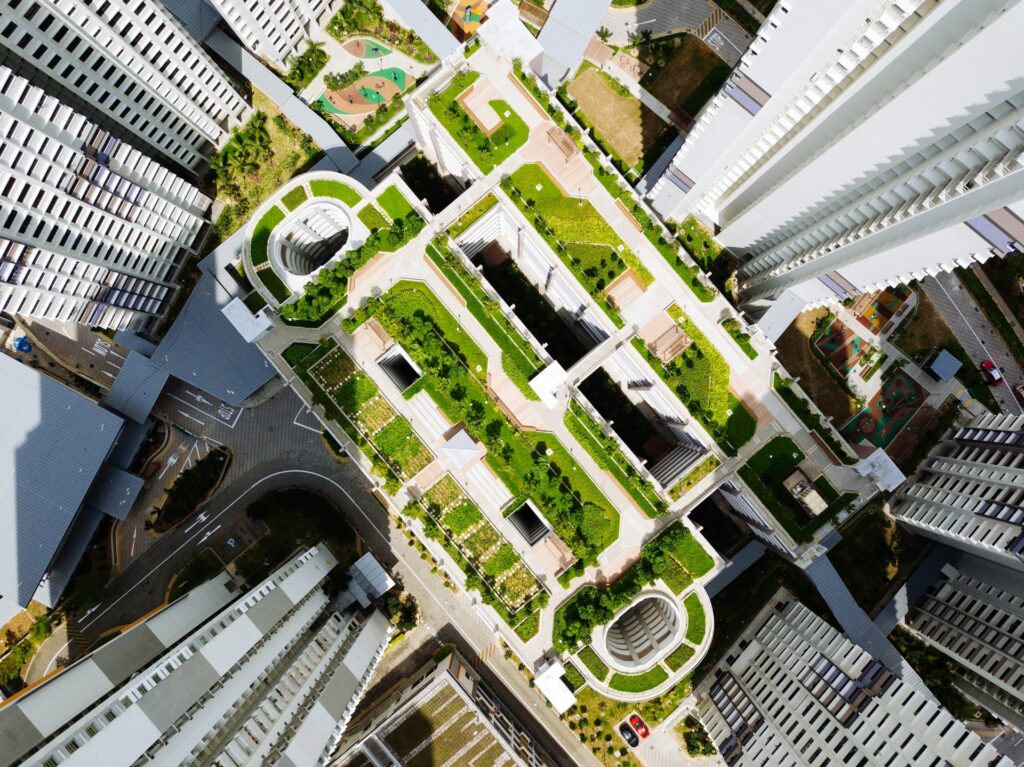The Benefits of Green Roof Systems in Urban Housing
Cities then experience new problems such as rising metropolitan temperatures, air pollution, and shrinking green areas because of its unceasing growth.
Indeed one such solution request that is mushrooming across the nation is green roof system solutions.
These systems that include vegetation layers put in roofs of buildings are effective as they promote ecological value coupled with economical as well as social values.
As featured in this blog, green roof systems for use in urban housing structures will be analyzed in terms of effects on the environment, cost, and the larger community.
Environmental Benefits of Green Roof Systems
The utilization of green roofs is a strong means for improving the environment of urban regions.
1. Eradication of Urban Heat Island Existence
It is well-known that the temperature within urban areas will be higher than that of the surrounding countryside primarily caused by the heat diffuse surfaces such as asphalt and concrete.
Green roofs do it to natural insulation, sun reflectance, and evapotranspiration which emits moisture into the atmosphere.
For this reason, they contribute to reducing general temperatures in urban areas.
2. Improved Air Quality
Vegetation on green roofs remove the CO2 and other pollutants in the atmosphere while emitting O2 into the environment.
The process of air filtration that happens in such manner is helpful in reducing emissions, the bad quality of the air in urban areas, affecting positively the human health and the environment.
3. Storm water Management
Use of green roofs has been seen as one of the critical strategies of mitigation of storm water runoff that is prevalent in urban areas.
Green roof systems also consume rainwater from the atmosphere soil and vegetation components hence reducing the pressure on the drainage system, flood risk is greatly eliminated.
4. Biodiversity Conservation
Green roofs help cities avert what Charles Sidel calls “urban squeeze” by acting like small ecosystems and home to birds, insects, and pollinators.
Some serve as nurseries and green lungs in the concrete jungles of the urban centers.

Economic Advantages of Green Roofs
While the initial capital costs of constructing green terraces can be higher than those of the conventional roof systems, they are financially profitable in the long term.
1. Energy Efficiency
Roof gardens have favorable thermal qualities, which means there is little need to use heating during winter or cooling during the summer.
It leads to reduced consumption of electricity and this in turn amount to considerable savings on costs of electricity bills.
Many investigations have found that they can lower energy consumption by as much as 30% at times.
2. Extended Roof Lifespan
The vegetation and the soil layers act as a barrier to adverse weather conditions as well as ultra-violet and temperature variations, which ordinarily affect the superior roof membrane.
This increases the life span of the roof, thus brings efficiency and effectiveness in minimal repair and replacement expenses down the line.
3. Increased Property Value
Green roofs improve the architecture and utility of buildings and therefore increase property values.
For urban housing developers it becomes one central issue that can be presented as key selling point to environmentally conscious clients.
4. Government Incentives
A number of governments provide special incentives such as tax exemptions or credits or otherwise provide grants or rebates to encourage green roofs in a city.
These financial advantages can help to recover installation expenses, where green roofs are considered more feasible for the broad range of owners.
Social and Health Benefits
Apart from the interaction between a green roof and the environment and economy, the quality of life of the residents within cities where green roofs are established is also enhanced.
1. Improved Mental Health
There are benefits of exposure to plants and natural environment including reduced stress, anxiety, and rates of depression. .
First of all, green roofs help to create the necessary green zones in the TA that act as oases from the concrete maze.
One of the benefits of rooftop gardens is also the ability to create additional spaces – recreational ones – that can bring the residents together.
2. Enhanced Noise Reduction
Green roofs contain several layers of vegetation and soil that absorbs noise coming from automobiles, airplanes, and other noisy structures in large urban receptacles.
This makes living areas less noisy and comfortable in addition to the areas filled with many people.
3. Urban Farming Opportunities
Green roofs can especially be used for practicing urban farming since residents can practice crop production directly on their roofs.
Here it is not only possible to provide healthy food choices but also develop an appreciation for nature and respect to the environment.
4. Education and Community Relations
An important characteristic of green roofs is that they contain potentials for both educational and community engagement purposes that are not present with conventional roofs.
By adopting green roofs, schools, housing estates, and community halls can educate people living in urban areas about sustainable environment practices, gardening, and combating climate change.
Conclusion
A green roof system presents a revolutionary approach meeting environmental, economic, and social needs of urban housing.
Being as green roofs affect temperature, air quality, storm water, and plant and animal habitats, they improve the sustainability of the world’s urban areas.
Besides, through energy efficiency, cost-effectiveness, and good looks, the products are very much worth being invested in by property owners or developers.
It can be said growing cities can benefit from implementing green roof systems in order to design and achieve more sustainable, comfortable, and climate friendly cities.
From noise abatement to housing an assembled civilization, from reducing stress to contributing to farming, the advantages of green roofs cannot be limited to aesthetics and, therefore, should remain integral to future urban housing designs.
Also read: The Hidden Cost of Suburban Sprawl: A Housing Inequality Perspective

